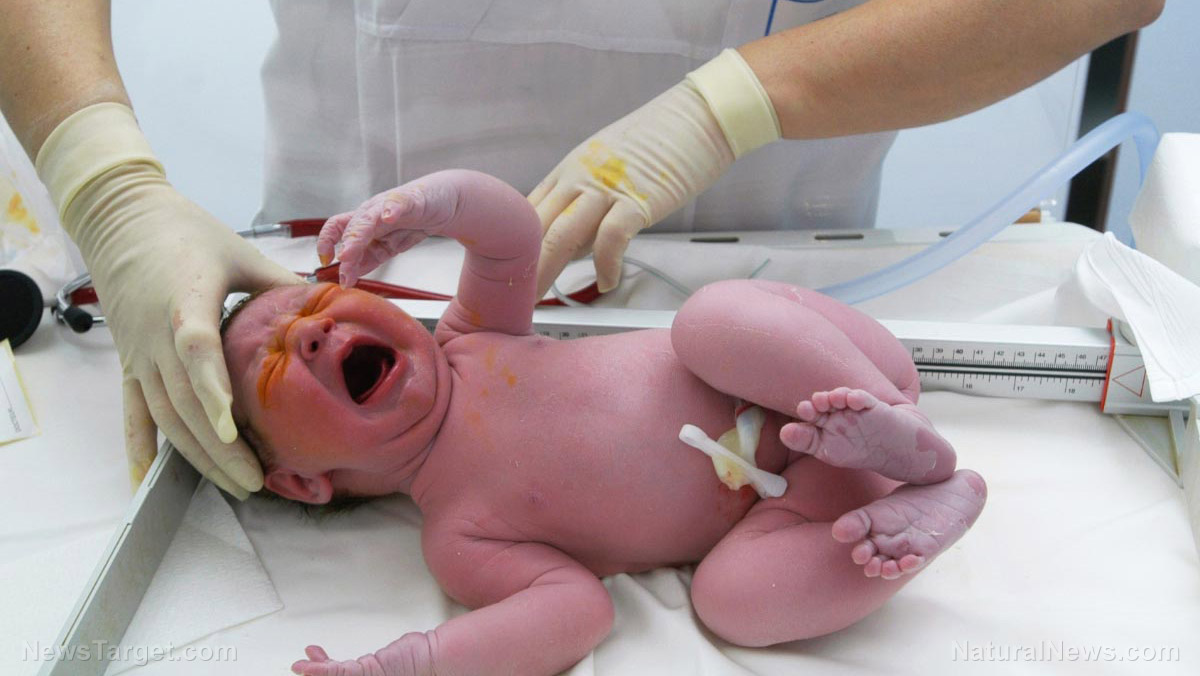World FERTILITY RATES hit 6-decade low while speculations fly about the Covid clot shots and spontaneous abortions
09/24/2025 / By S.D. Wells

Global fertility rates have plunged dramatically over the past six decades, raising urgent concerns among experts about demographic, economic, and social consequences. Fertility rate, defined as the average number of children a woman bears in her lifetime, has declined from four to five children in 1960 to 2.2 by 2023—barely above the replacement rate of 2.1. While the world’s population continues to grow, reaching an estimated 8.1 billion in 2025, the pace of growth has slowed, with projections indicating further decline.
- Global Fertility Collapse: The world fertility rate has dropped from 4–5 children per woman in 1960 to 2.2 in 2023, nearing the replacement level of 2.1, with three-quarters of the global population now living in countries at or below replacement.
- Economic Fallout: Experts warn of long-term economic decline as shrinking workforces and ballooning elderly populations strain national economies, with low fertility described as “the true economic challenge of our time.”
- Regional Trends: Asian and European nations report the lowest fertility rates—South Korea (0.72), China (0.999), and much of Europe—while high-fertility countries (5+ children per woman) are now limited to parts of Africa.
- Contributing Factors: Declining fertility is linked to contraception, abortion legalization, divorce law reforms, and modern economic pressures like housing costs and childcare expenses, which deter younger generations from having children.
An Impending Population Crisis? World Fertility Rate Hits 60-Year Low
Demographers warn that if these trends persist, societies will face shrinking workforces and ballooning costs associated with aging populations. Steven Mosher of the Population Research Institute described the situation as a “gradual implosion of the world’s economy,” predicting long-term instability that will be difficult to reverse. Similarly, macroeconomist Jesús Fernández-Villaverde called declining fertility “the true economic challenge of our time.”
According to the U.S. Census Bureau, only about 4 percent of the global population lives in countries with high fertility rates—primarily in Africa, where even those rates have declined. Nearly three-quarters of humanity now resides in nations at or below replacement fertility. India, the world’s most populous country, has seen its fertility fall from around six children per woman in 1960 to 1.9 in 2023. China’s fertility has dropped below one, while South Korea, Singapore, and Ukraine have some of the lowest rates worldwide, all under 1.0. The United States fell below replacement in 1972 and hit a historic low of 1.62 in 2023.
In Western nations, the decline began in the 1960s with the advent of oral contraception, abortion legalization, and rising divorce rates. The FDA approved the first birth control pill in 1960, and within five years U.S. birth rates had already fallen. Roe v. Wade (1973) further accelerated the decline, with studies showing significant reductions in birth rates following abortion legalization. Similarly, divorce law reforms in Europe and North America contributed to shrinking family sizes.
China’s experience underscores the dramatic impact of policy. Following famine and political upheavals in the mid-20th century, Beijing introduced the one-child policy in 1979, enforcing it through contraception, sterilization, and abortion. Researchers estimate that the policy prevented between 400 and 520 million births, leaving the country with one of the most rapidly aging populations in history.
Economic Pressures and Modern Challenges
Today, financial concerns are a major factor in low fertility. In South Korea, respondents in a United Nations survey cited housing costs, limited space, and childcare expenses as the leading reasons for delaying or avoiding parenthood. In the United States, surveys show that over one-third of childless adults feel they cannot afford children. The Department of Labor reports that childcare costs often rival or exceed rent, creating a significant barrier for young families.
Experts caution that while the demographic shift is gradual, its effects will intensify within decades. Nations with persistently low fertility face economic stagnation, labor shortages, and social strain as older generations outnumber the young. With fertility rates at a 60-year low and falling across nearly every region, the world confronts a looming population crisis that could reshape global economies and societies for generations to come.
Tune your apocalypse dial to preparedness.news for updates on real news about surviving the Globalist depopulation agenda that attacks us from both ends, as toxic food and toxic medicine.
Sources for this article include:
Submit a correction >>
Tagged Under:
bill gates, birth rates, Censored Science, Collapse, depopulation, Fertility, genocide, population control, vaccine damage, vaccine genocide, vaccine kill
This article may contain statements that reflect the opinion of the author
RECENT NEWS & ARTICLES
COPYRIGHT © 2017 SCIENTIFIC NEWS




















